The TT eSports MEKA G1 Mechanical Gaming Keyboard -
The Tt eSports MEKA G1 reminds us of the old AT Style keyboards (which incidentally had mechanical switches) because of its size and general shape. The MEKA G1 also is heavy. Although not listed the G1 weighs the same as the QuickFire Pro from CMStorm (about 2.9 pounds). This will help to keep the MEKA G1 from sliding across your desk when you are using it. 
The surface of the keys and keyboard is slightly tacky. You can feel the slight grip when you run your fingers over it. The size of the keys is comparable to other mechanical keyboard on the market (there are not that many really) and the font is easily readable (unlike a couple that we have seen that chose a more stylized font). Under these keys are the Cherry MX Black switches. These switches are listed as having a minimum of 50,000,000 key presses. Like all Cherry MX Switches these have a type of tactile feedback and resistance. The resistance on the black switches is listed as strong and has a linear feedback. This means that the key press has a distinct linear feel to it. You can feel when you are at the end due to the resistance. It is not like the “click” on the Cherry MX blue or the force feedback on the Cherry MX Brown. These have a spring to them meaning that as you press them you can feel them push back into place. This is much more evident than on the lower resistance brown switches.

For the longer keys like the spacebar, shift and enter there is a stabilizer mechanism that consists of a thin metal rod that bends around (clipping into the bottom of the key tray) and clips into two eyes on either end of the key (as you can see in the picture below).
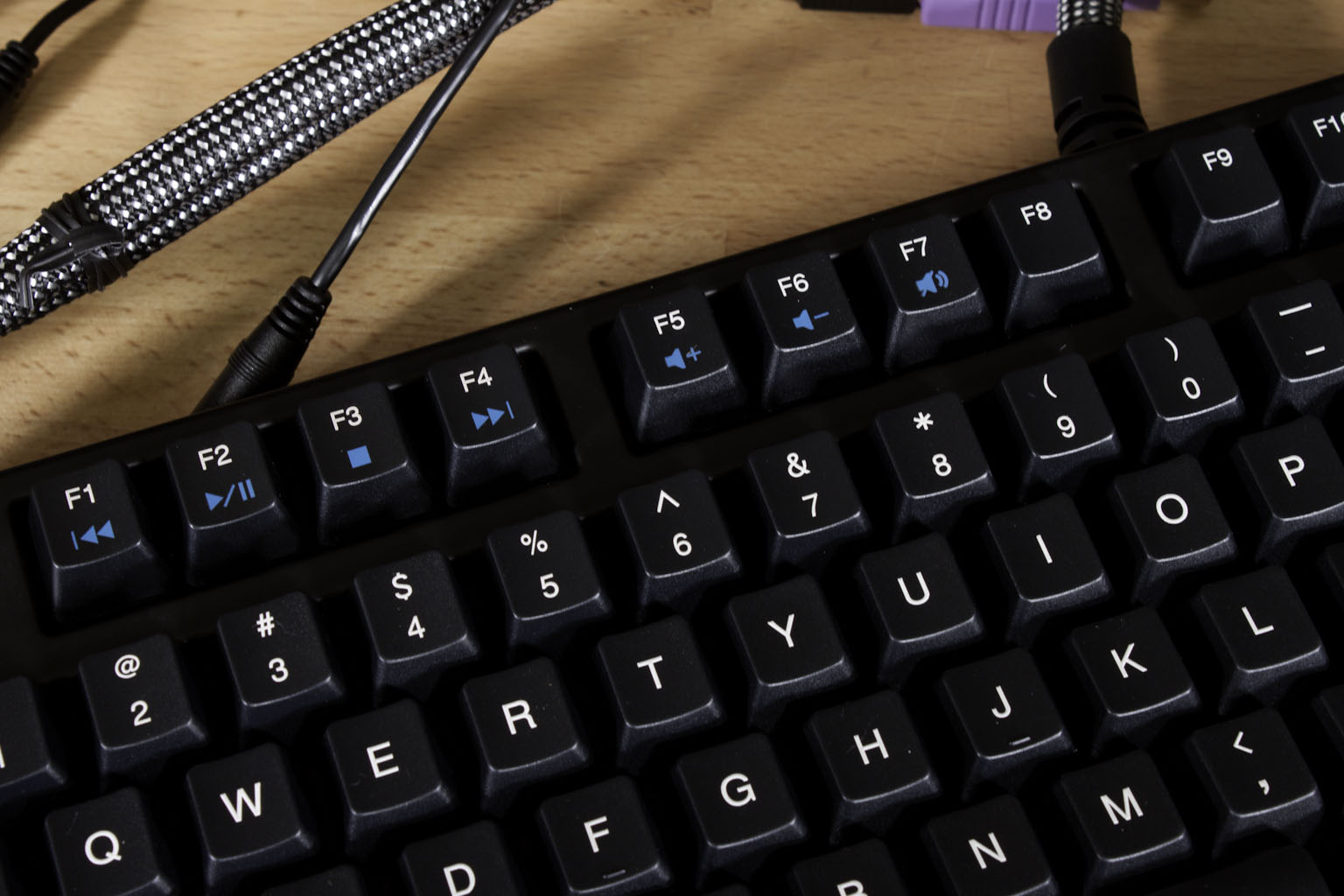 |
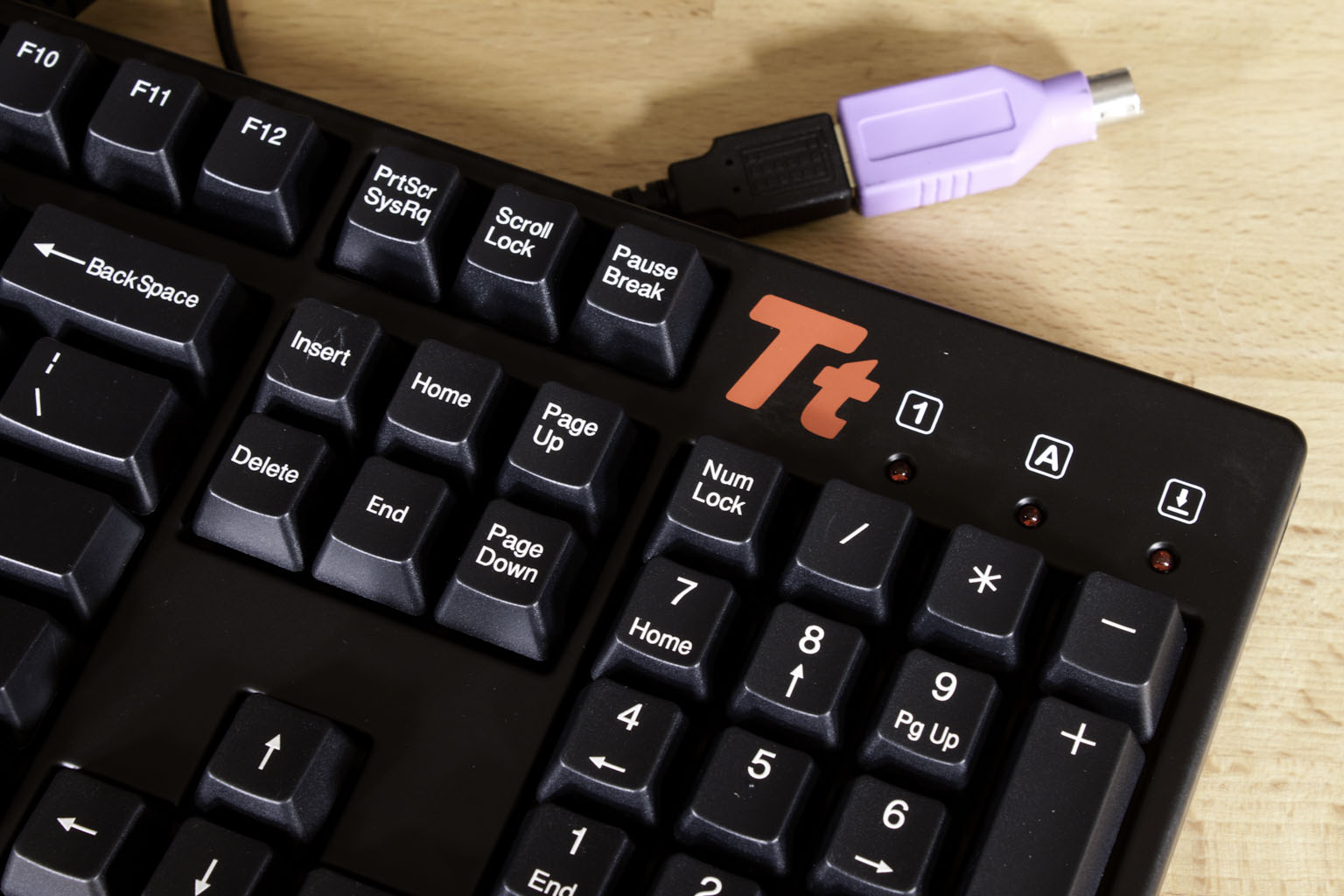 |
Thermaltake has also done something a little interesting with their key layout. They have opted to leafve one key hard coded as a “windows” key on the right of the keys, but replaced the other with a FN (Function) key. You use the function key to activate a row of multi-media controls that double as F-Keys.
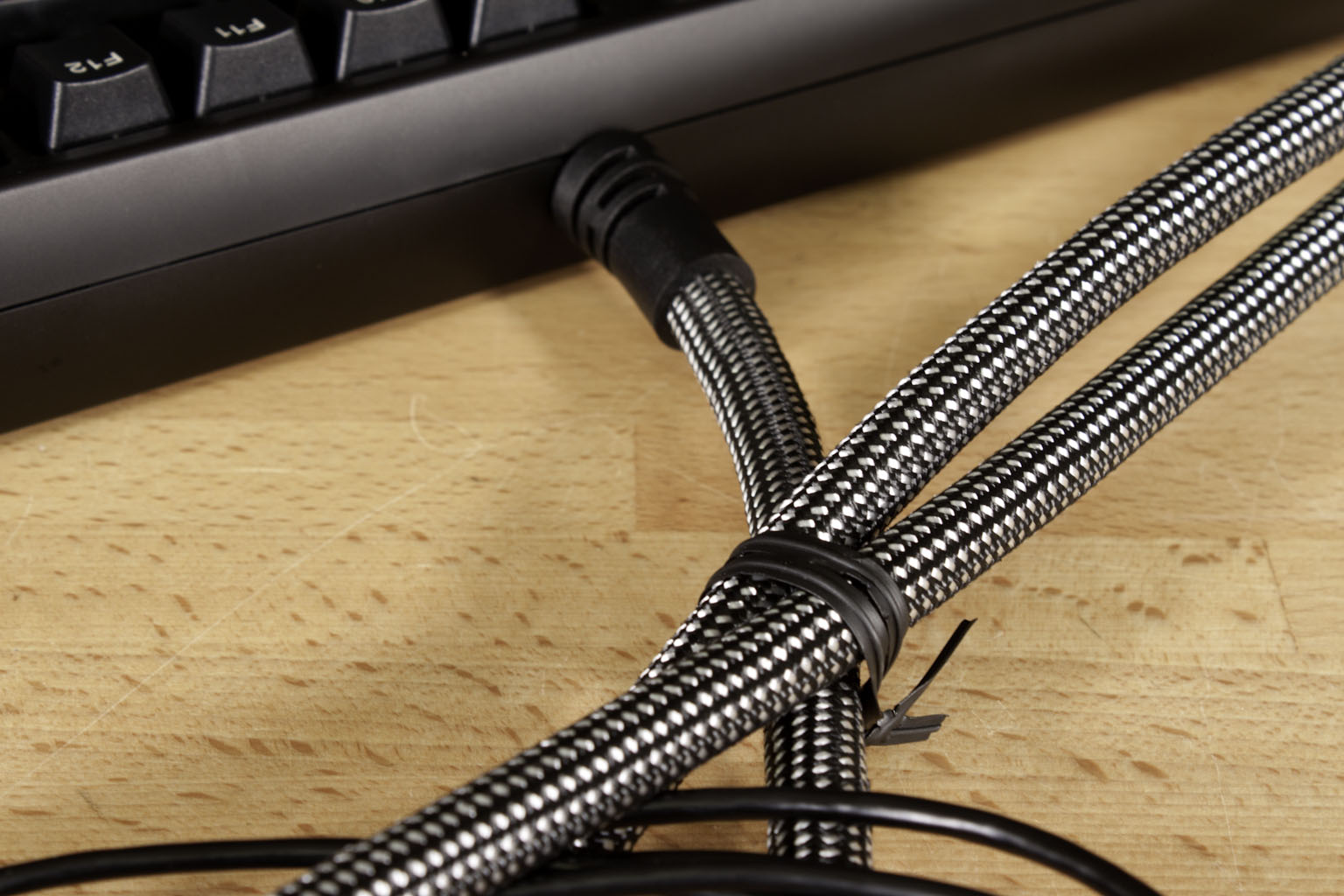 |
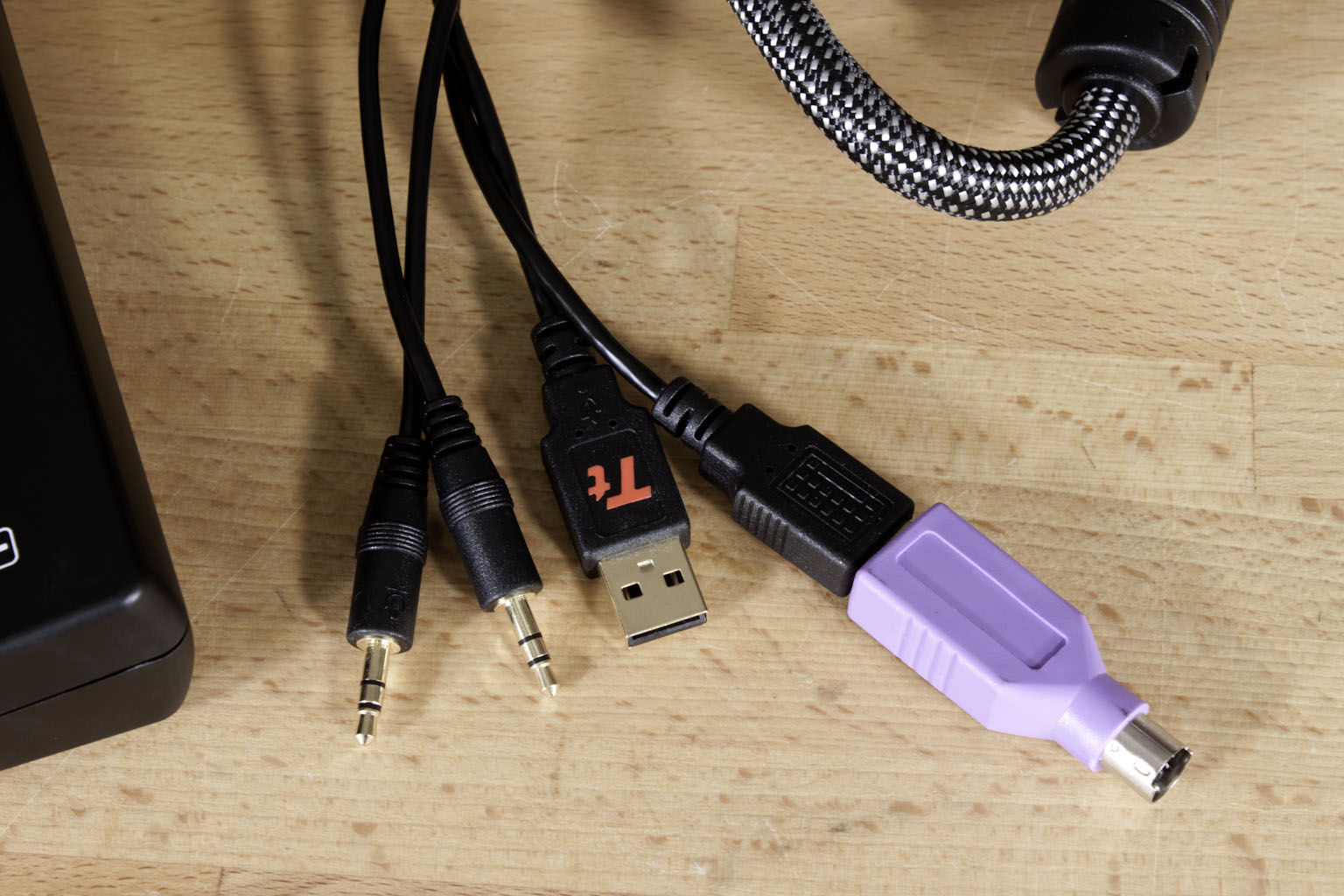 |
On the front of the box Thermaltake stated that they used military grade cables. We now know what they meant (even if it is not a real term). The cable coming out of the back of the MEKA G1 is very thick and coated with a braided mesh. It also has a very sturdy connection to the back of the MEKA G1. Inside this cable are two separate USB cables and two audio cables (one for headphones the other for a microphone). The USB cables are there to provide connectivity and also power. You have two USB ports on the MEKA G1 and without the extra 5v power from that second USB connector they are not going to be of much use. The headphone and microphone jacks are a great plus here for gamers as you do not have to rely on front panel headers, but can use the longer cables that run to the back of your system and then plug in here.
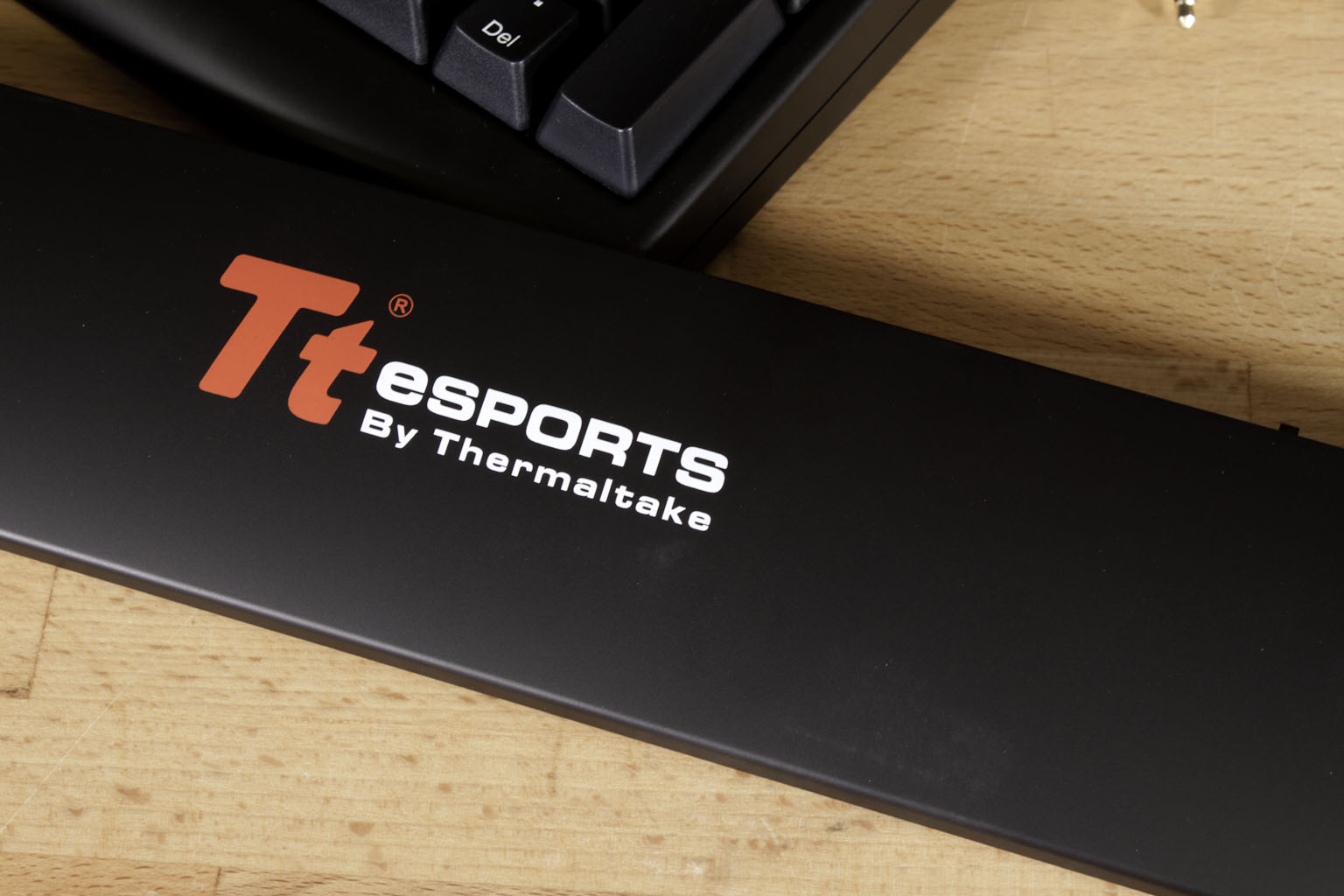 |
 |
 |
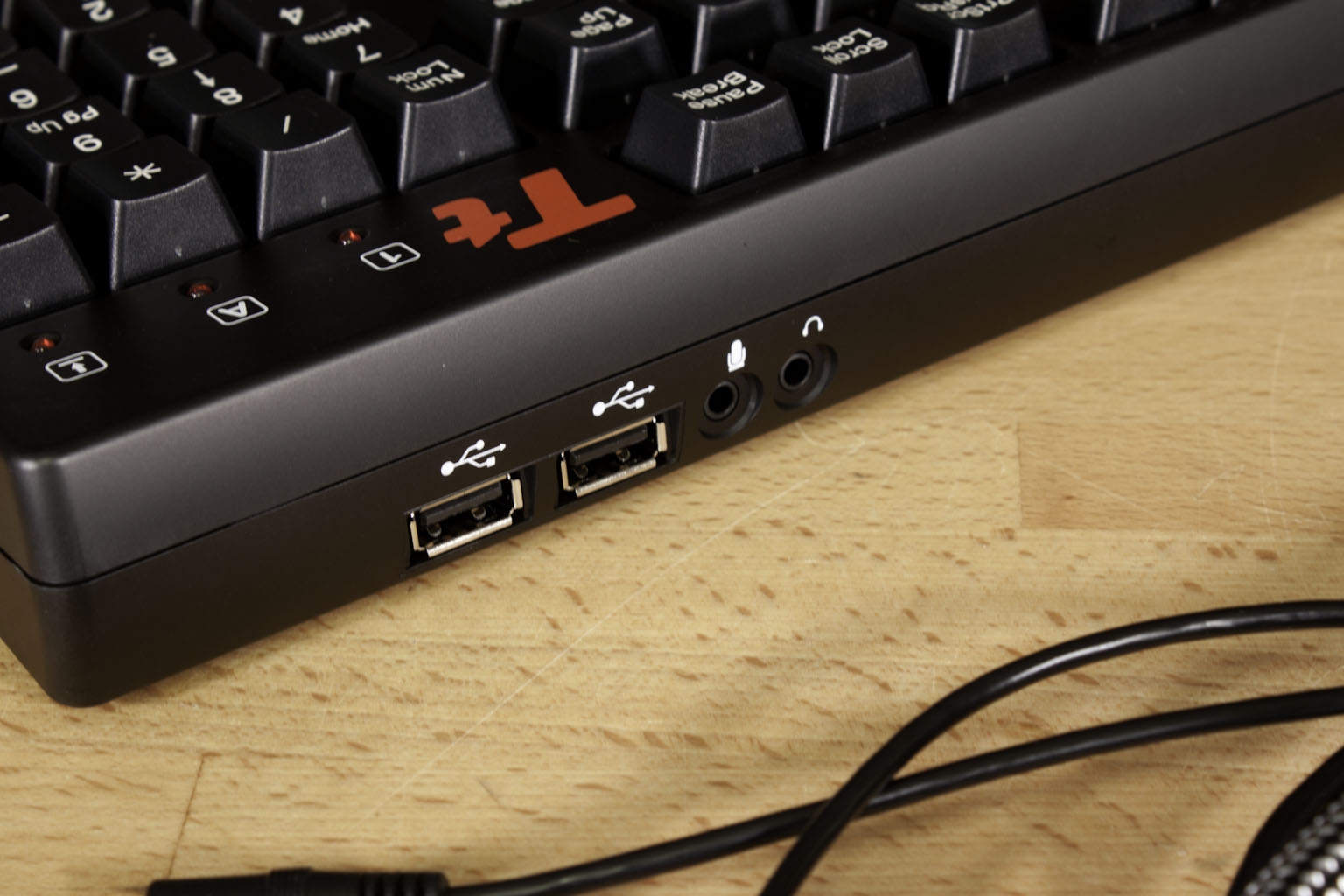
Thermaltake has included a nice palm rest with the MEKA G1. It clips into the main keyboard in a normal manner and while it is not the most ergonomic item we have worked with it does add a little style to the MEKA G1 in our opinion. A word on some of the internals (besides the keys); Thermaltake lists the polling rate of the MEKA G1 as 1000Hz. This is great, but it also should be noted that not all systems will support this polling rate (most new ones will though). The good news is that even if your board does not support this it will still work, it just will not have as fast of a response as it could. The MEKA G1 also supports N-Key rollover, but only in PS/2 mode.
Overall the MEKA G1 is a solid mechanical gaming keyboard and we cannot wait to put it through its paces on our gaming test system.



